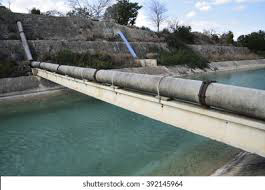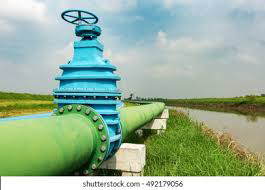TRANSPORTATION OF WATER / VARIOUS WATER CHANNELS
The term conveyance / transportation refer to taking of water from source to purification plants and from treatment plant to consumers.
In any water supply systems, raw water from source to treatment plants may be carried in open channels. Economical sections of open channels are generally trapezoidal while rectangular sections prove economical when rock cutting is involved. The channels are to be properly lined to prevent seepage.
2. Aqueducts :
The term aqueduct is usually restricted to closed conduits made up of masonry. These can be used. for conveyance of water from source to treatment plant or for distribution. Aqueducts normaly run tulf to two-third full at required capacity of supply in most circumstances.
3. Tunnels :
Tunnels are ako like aqueducts. Tunnels which are not under pressure are usually constructed in horse-shoe shape. But if they convey water under pressure, circular cross section is the best. In pressure tunnels, the depth of cover is generally such that the weight of overlying material overcomes the bursting pressure. Tunnels are used to convey water into the cities from outside sources.
4. Pipes :
Pipe is a circular closed conduit used to convey water from one point to another, under gravity or under pressure. Usually pipes follow the profile of the ground surface closely. If pipes do not run full, they are called to flowing under gravity. But flow under gravity is possible only if the pipe is given a definite longitudinal slope.
5. Cast iron pipes :
Cast iron pipes are used in majority of water conveyance mains because of centuries of satisfactory experience with it. Cast iron pipe is resistant to corrosion and accordingly long lived: is life may be over 100 years.
6. Steel pipes :
Steel pipes of small dameter can be made from the solid, but larger sizes are made by riveting or welding together the edges of suitably-curved plates, the sockets being formed later in a press. The joints may be either transverse or longitudinal Steel pipes cannot be easily made to resist high external pressures.
7. Cement concrete pipes :
Cement concrete pipes may be either plain or reinforced, and are best made by the spinning process. They may be either precast, or may be cast-in-stu. The plain cement concrete pipe are used for heads up to 7 m while reinforced cement concrete pipes are normally used for head upto 60 m.







Comments
Post a Comment